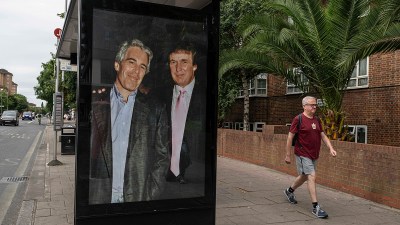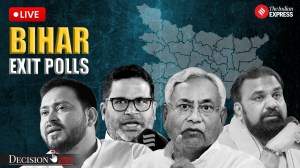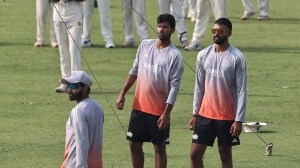
Those behind the national leadership’s political manoeuvrings believe such steps are necessary when “a party finds itself saturated in its strongholds” or when “it finds difficult to expand in regions that have long been out of its reach”.
Story continues below this ad
A party leader involved in the expansion efforts says: “Today, the BJP has achieved a position no other party could dream of. But we have weak spots in many parts of the country, and we have to turn to leaders from other parties till we develop our own core base there.”
The leader gives the example of the RSS, the BJP’s ideological parent, which has always kept its eye on heroes beyond the Hindutva pantheon to extend its reach.
He also gives the example of success stories like Assam Chief Minister Himanta Biswa Sarma, who joined the party in 2015 from the Congress, and has since become the main driver of the BJP’s growth in the Northeast. Similarly, Brajesh Pathak (who crossed over from the BSP) and Jitin Prasada (formerly of the Congress) are the BJP’s Brahmin faces in Uttar Pradesh, with Pathak involved in the BJP’s mission to woo Pasmanda Muslims too. In Telangana, former BRS leader Etela Rajender is expected to help the BJP’s ambitions in the state as the campaign committee chairman.
However, not everyone in the BJP is happy, particularly the second-rung leaders who have been long waiting in the wings, who find their position suddenly uncertain. Many are also uncomfortable about having to justify the crossovers to their ideological bases.
Story continues below this ad
In private, several ask whether roping in leaders facing graft charges, instituted by the BJP’s own governments in many cases, is worth the questions it raises. They talk about “unfiltered” inductions, their “placation” via plum positions, and the embarrassment this leaves them facing.
These leaders also talk about the difficulty in explaining why the BJP’s own governments are now increasingly projecting a welfarist agenda, even as the party takes on the Opposition’s “revdi” culture.
“As we dilute the principles the party stands for, it is becoming difficult for the BJP to stand apart,” says a party leader.
A district leader who has been with the BJP for long, told The Indian Express “It is no longer a party with a difference. The BJP is now a party with differences.”
Story continues below this ad
Another local leader spoke about Devendra Fadnavis, who “had worked hard for the party for years”, being told to step aside as chief minister, to let new BJP ally Shinde Sena take the post. “We have been working hard, many times we have spent money from our pockets to work for the party. Obviously, we expect opportunities in the party. But if this is how the opportunities in the party are distributed, where will we get a chance?” the leader said.
The disappointment is perhaps more acute as the current BJP dispensation put a lot of focus on building the organisation – in terms of new members and resources – in the initial years of coming to power in 2014. In his book, former journalist and current press secretary of President Droupadi Murmu Ajay Singh writes: “Unlike the Congress, which degraded its vast organisational network and rendered its effect, Modi ensures that the organisation is not a political expedient for the government… This predominant political position is unlikely to be unsettled in a post-Modi phase, as he will be leaving behind a robust political structure that will keep on creating its own icons.”
However, to others now facing a stint in the wings again, the question is why the party has not been able to accommodate those from the organisation in its governments. “Why is it that those who come through the ranks always get sidelined? Most of the positions – be it in Uttar Pradesh or Madhya Pradesh – go to the lateral entries. How many of the top ministers in the Union government have come through the ranks?” a young party leader in Madhya Pradesh asked.

































